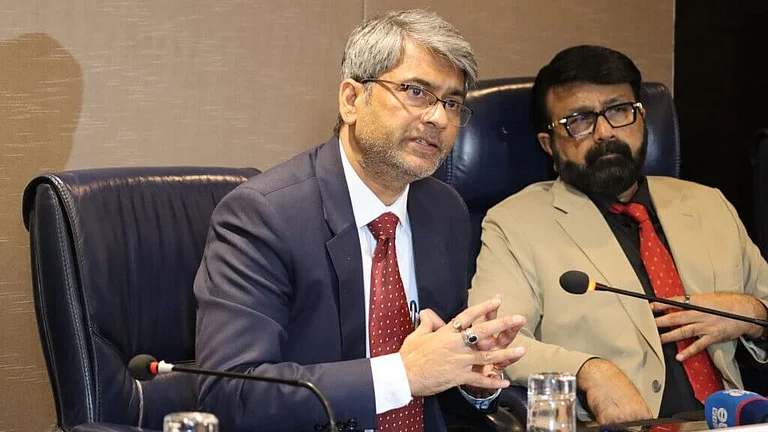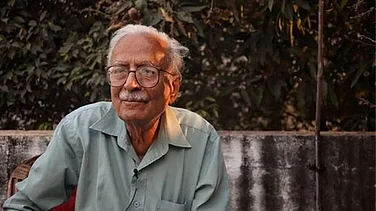Anupama, like her eight siblings based in eastern Uttar Pradesh, could not afford to study beyond school. She, however, did not want to follow the path trodden by her older sisters who married 'eligible men' with 'stable jobs'. Her aspiration indeed included a 'stable job' — albeit without the pre-condition of matrimony.
Anupama, who aspired to work and earn her own money, became the first girl from her small village to join a vocational training institute and has gone on to become an electrician in Noida. Unknowingly, what she also ended up also doing was setting in motion a bewildering phenomenon of girls in the area aspiring to become electricians, resulting in a spurt of female-enrolment in the training course that she had undertaken.
Women in the workforce
While sporadic incidents of girls defying stereotypes breakout every now and then and make for brilliant case-studies, these continue to be anomalies with very little institutionalized effort to make 'working-women', especially from rural India, a norm.
Despite an upward growth trajectory in terms of the economy as well as education, women's participation rate in India has slipped from 37% to 27% between 2004 and 2015, positioning us as one of the bottom-20 countries on this count.
Women stepping out to work, has always been viewed unfavorably in the rural-setting, however a special exception had always been extended to farming — it's close to home, it allows multi-tasking with domestic-chores and it reduces the work-load of the male members. So while the overall plummet in agriculture-related jobs has impacted employment levels overall, rural women remain worst affected.
The alternative employment opportunities that have sprung-up are in trades like manufacturing and construction, based predominantly in urban areas. Youth in villages have limited exposure and knowledge about the new opportunities, and women specifically no longer have the physical accessibility to these jobs resulting in their withdrawal from the workspace altogether.
Gendered occupations
In an attempt to be 'inclusive' of women, vocational training providers along with the government's Sector Skill Councils (SSCs) often encourage women to enrol in 'women-specific' courses like tailoring, mehendi-making and bag-making despite the limited job opportunities these would yield compared to other male-dominated vocational courses.
To steer women towards better paying jobs in the organized sector, efforts need to be made into breaking these stereotypes and not consolidating them. One look at any key website of the government's SSCs prove that we are a long way to go — with not a single photograph of female students on the official SSC websites on construction, automotive, iron and steel as well as plumbing.
These photographs on websites and pictures on pamphlets aren't incidental; they are symptomatic of the larger problem with the skilling efforts that are not just targeted to attract men, but which usually also lack the capacity to include women who may be interested — with factors ranging from the limited female staff in these training institutes, to the complete absence of women's residential facilities. Expecting women to rise up in these fields, without any prior precedent of success from their own villages is difficult already, but unless role models for the overall industry are promoted, this task is seemingly impossible.
Moving forward
When Pratham started working in vocational training, getting women to attend a training course was tough, but making them take up jobs post training was even tougher.
For instance, in 2012 when Pratham Institute started working in the naxal-affected region of Gadchiroli in Eastern Maharashtra — from where we have now trained over 3,000 youth — less than 10% of the enrolees were women. In an area with no prior example of even men working in trades like hospitality, it was unrealistic to expect a sudden outflow of first generation working-women migrants. The challenge was not just convincing the families of these girls, but the girls themselves that they were capable of stepping into shoes that were traditionally worn by men.
Four years later, over 50% of the enrolees from the region are women who are not just relocating to cities, but also support a younger lot of women in taking up unconventional jobs.
The change, however, was not so easy and is far from over. A few key factors catalytic to bringing about this transformation have included setting up of a local 'career-guidance center' to involve the entire community, counselling session with parents who would help form 'groups' of girls to leave together to study and work, and just information dissemination through awareness drives and employment camps (Rozgar Melas) with key village-leaders like the Sarpanch, to build trust within the community.
Further, to maintain a continuous flow of women into vocational skilling, it is crucial to not just ease the barriers to entry and create training-environments congenial to women, but also to ensure strong support-mechanisms for women stay on in their jobs.
With most trainees in vocational training coming out of rural India and with jobs in the urban areas, lifestyle transition and the pressure of the first-job are anyway hard, for both men and women. The latter group, however, have added battles that they were hitherto not faced with — the challenge of safety, struggles of finding accommodation alone amidst suspicious landlords, and the realities of work-place harassment which are amplified for these women who are anyway fighting all odds, and often with their own families, to prove their mettle. Ensuring these women don't dropout and go back home with bad experiences is essential to prevent resistance from the community and fear within women themselves, in working.
While Skill India and other initiatives aimed at 'training' youth will no doubt succeed in increasing the skilled workforce. However, without end-to-end solutions aimed at addressing the problems of mobilizing and of support mechanisms post-placement, women will continue being isolated from this skilling movement. The myriad problems that bridle women's participation won't dissipate with general attempts to increase employment levels; the gendered problems need to be identified, addressed and tackled specifically.
(Medha Uniyal is a development professional working in the vocational skilling arm of NGO Pratham. Her writings appear in publications such as The Guardian, Indian Express, World Economic Forum, among others.)





















